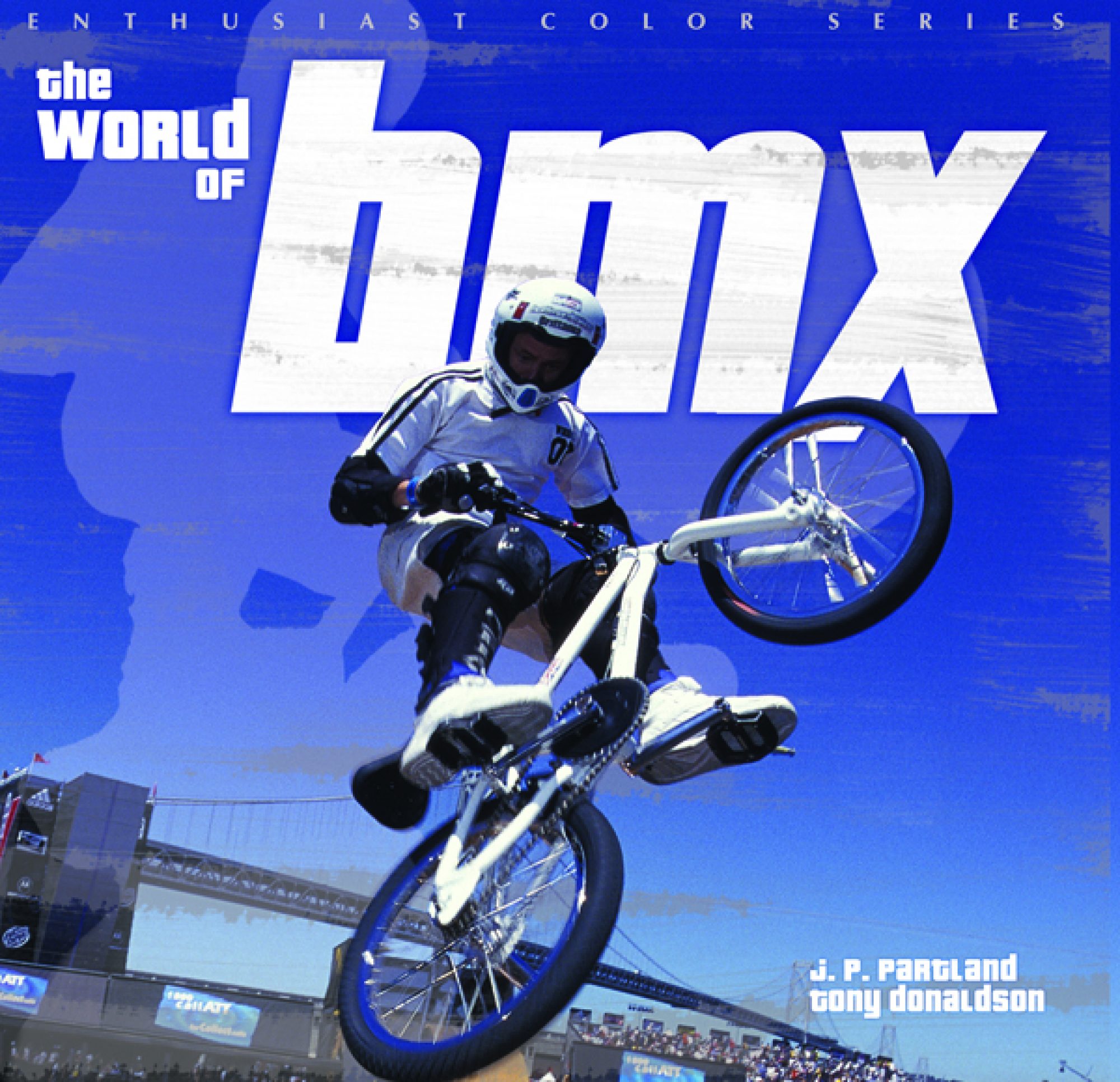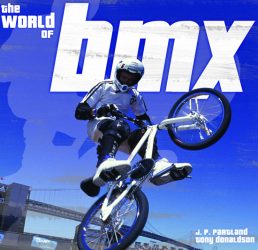CHAPTER 1: FROM BUSTED BIKES TO BREAKOUT ACTION
If ever there was a sport begging to be named, it was BMX. Since kids first swung their legs over bicycles, they had been riding in dirt, in woods, over jumps, racing their friends and trying to outclass one another on tricky sections. It took the invention of motocross and the drive of some intrepid kids to make BMX into its own thing.
Motocross, or mx, is motorcycles going into the dirt, mud, woods, desert, whatever. It is about getting away from the road. The bike bikes are raced on technically difficult dirt tracks. After motorcycles took hold in the early part of the 20th century, there were flat track and road competitions, but the off-road aspect took time to develop. Part of the problem was technology; the gear couldn’t quite do what people wanted it to do. As the technology grew, so did the sports popularity and it saw a real boom in the 1960s. The thrills and speed made it exciting and kids were getting into it. Some kids started to think ‘if motorcycles can do it, so can bicycles.’
Ron Mackler was a teenage employee at Palms Park, a county park in Santa Monica, CA. He had been involved with the Boys’ Club, and liked its mission and accessibility. He was running youth programs at Palms, and noticed that kids were riding to the park on their bikes. He had been doing motocross himself, and believed he could share the thrills of mx with the kids riding in. “We had a big sandbox there,” he says. “I said, ‘why don’t we throw sand on the corners of the sandbox and do some slides?’ They seemed to have a good time doing it. I asked, ‘why don’t we have TT races?’ I would line three or four kids up and they’d go 5 laps around the sandbox and slide on all the corners. The kids got into it. Then I ran into a guy with a construction business. There was another guy named Dave Donovan who was good with kids, so we got this guy and permission from the parks department to put this track together.”
The first race was on July 10, 1969. All the basic ingredients were there; uphill, downhill, berms, jumps, turns, a flashlight for the starting light. Mackler ran races at the park for the next fifteen years. Once word got out, kids came from all over, parents driving up to two hours to get their kids in the Thursday night action. Some BMX greats came out of the early days at Palms. They include Tinker Juarez, Perry Kramer, and Stu Thomsen
Scot Breithaupt was a sponsored motocross teen. Only 13, he wanted to create a practice course where he could hone his skills. In 1970, the Long Beach, CA native started creating a loop in a semi-abandoned space known as Bums Park—for all the homeless who hung out there—and rode the loop with his friends. In order to make it a real race, he needed a sanctioning body. Scot created BUMS (Bicycle United Motocross Society), turning the home field moniker into an acronym. Scot was both an excellent racer and imbued with entrepeneurship. He got 35 kids paying a quarter each at his first race. He gave them trophies he had won racing motocross. The second race drew 150. Scot’s track grew, and he helped build others; he had eight tracks by 1974. Harry Leary and a number of others came out of Scot’s tracks.
The early bikes were the basic kid ride. Schwinn Sting-Rays, and the Huffy, Murray, and Sears knock-offs. Kids being kids, they sometimes went for style and sometimes went for function. The Sting-Rays had the classic cantilevered frame that Schwinn made famous–some liked to cut off the seemingly unnecessary frame tubes that went forward from the seat tube. The modified frame was lighter; but this seriously weakened the frame and often led to failures. Others tried raising the bottom bracket height by cutting out some of the seat tube and putting in a second bottom bracket shell. Others still liked taking their sisters’ bikes out because the girls’ frame made it easier to do funky tricks—but this frame design was weak to begin with and couldn’t take the pounding. Others went for more motocross style and practicality, like adding motocross handlebars. The difficulty here was that the mx bars needed a shim to fit in the bicycle stems. Breithaupt made some extra money by selling motocross stuff to other kids; handlebars, grips, and number plates.
These two tracks were the start. Mackler wanted to keep things accessible and interesting, so he kept entry low, $5 for a ten-week session, and each session had up to four hours of racing. He gave out as many awards as he could, certificates, plaques, trophies, with the largest trophy being for sportsmanship. If kids couldn’t pony up the cash, Mackler let them work it off. He changed his track around as often as he could. He had wheelie contests, jump contests, whatever it took to keep things from getting boring. While Mackler was keeping things simple, Breithaupt was creating a league, with a scoring system, and rules, and champions.
The term BMX is still somewhat of a mystery. Both Breithaupt and Mackler claim credit. There is evidence that it was called “pedal cross.” Mackler says he called it BMX from the start. Breithaupt says he used it to explain the sport to national magazines. Later, in 1974, Bicycle Motocross News was created and the publisher, Elaine Holt, is given naming credit by some.
While the tracks were gaining great cred from word of mouth, and bike companies were beginning to notice, the biggest boost came from a motocross movie, On Any Sunday. Released in 1971, the documentary highlights motorcycle racing, the movie actor Steve McQueen (a motorcyclist who did many of his own stunts in movies), and the heretofore unknown sport of kids racing bikes on a dirt track. The bmx scenes were short, but it was enough to stir the pot of interest.
GEARING UP FOR BMX
In the early days…
Looks like you’ll have to buy the book to find out more.


